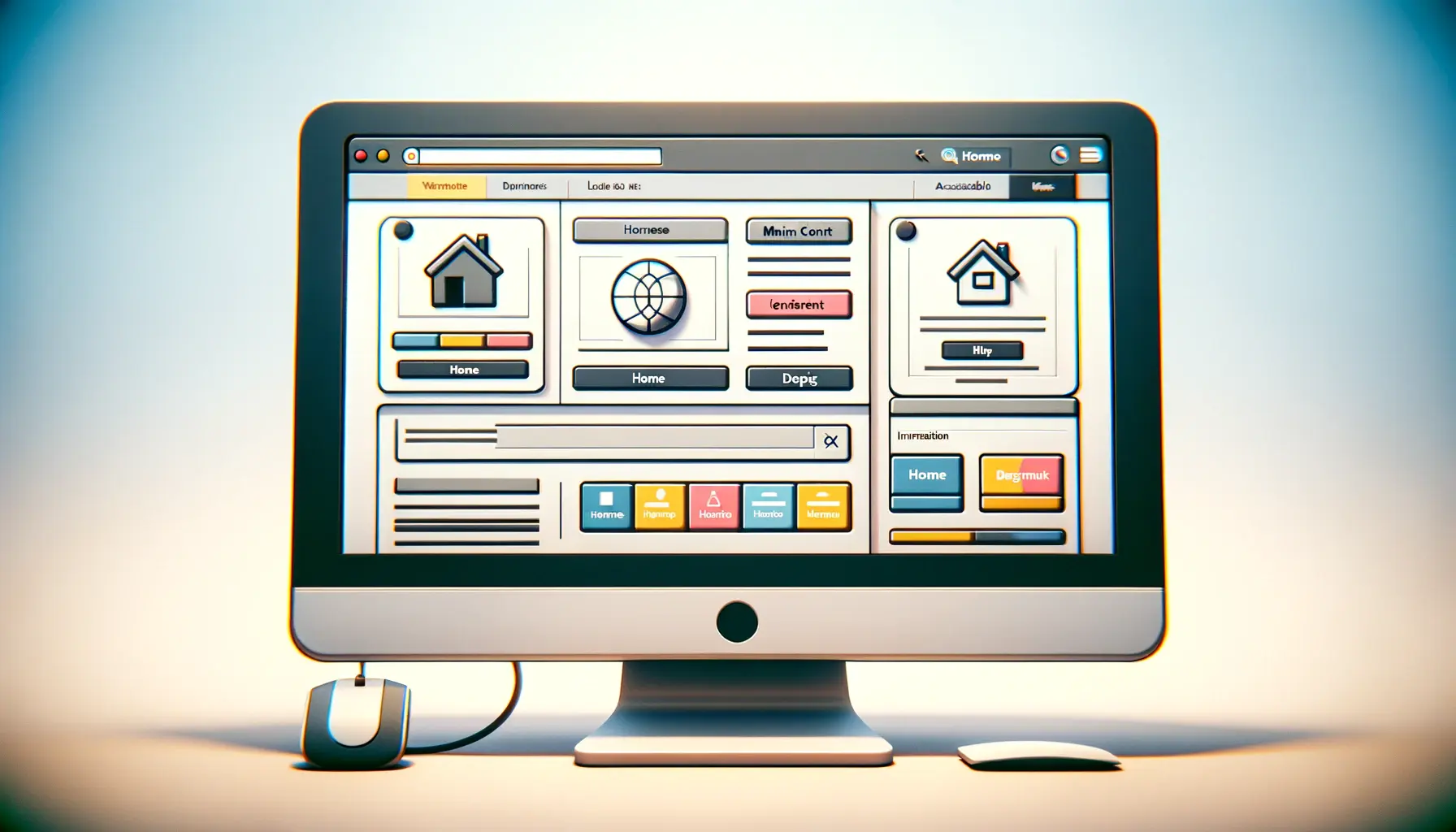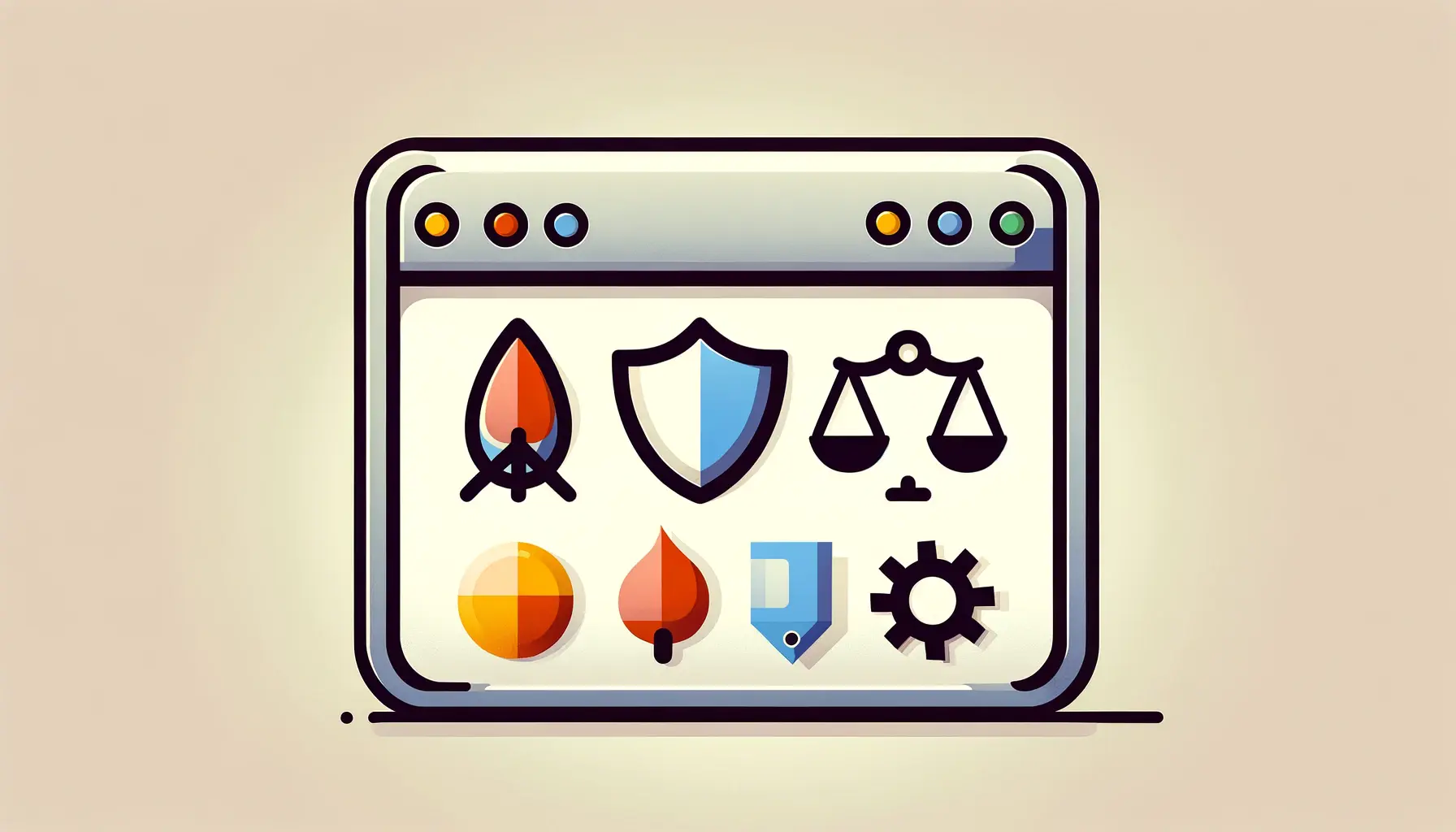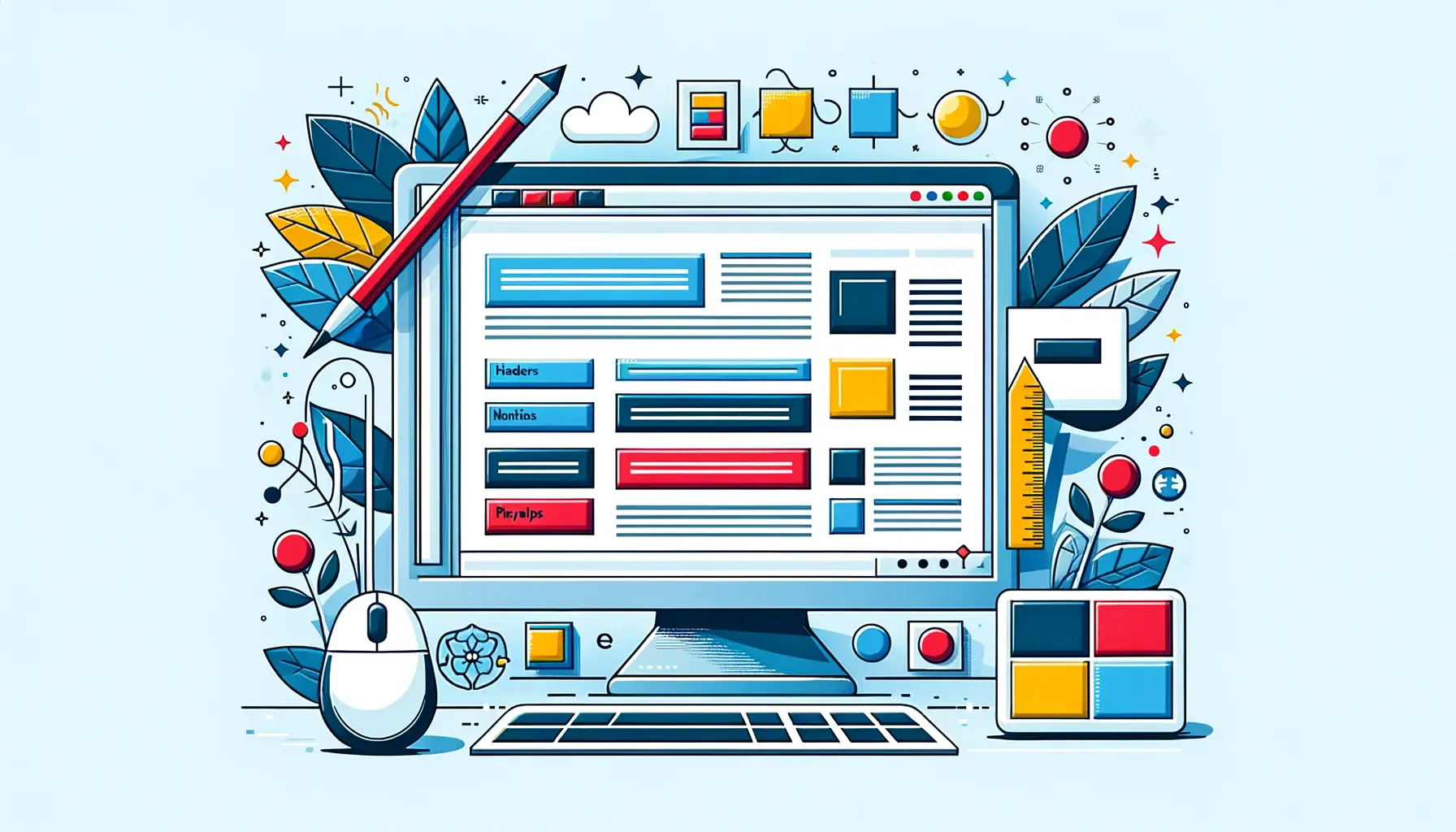Web accessibility has emerged as a crucial aspect of the digital landscape, ensuring that websites and online resources are usable by everyone, including people with disabilities.
This concept is not just about altruism; it’s a fundamental right and a legal requirement in many jurisdictions around the globe.
As the internet becomes increasingly integral to daily life, the importance of making digital content universally accessible cannot be overstated.
This article delves into the global standards that guide web accessibility, highlighting the concerted efforts to create an inclusive digital world.
The drive for web accessibility is underpinned by the recognition that the internet is a vital resource for information, education, employment, government services, commerce, and more.
However, without adherence to accessibility standards, a significant portion of the population is at risk of being excluded from these benefits.
Global standards such as the Web Content Accessibility Guidelines (WCAG) have been developed to address this issue, providing a framework for making web content more accessible to people with a wide range of disabilities.
- Understanding Web Accessibility
- Global Standards and Guidelines
- The Role of Technology in Enhancing Accessibility
- Accessibility Challenges and Solutions
- Best Practices for Implementing Web Accessibility
- Inclusive Content Creation and Management
- Future Trends in Web Accessibility
- Embracing a Future of Global Inclusivity
- FAQs on Web Accessibility and Global Standards
Understanding Web Accessibility
At its core, web accessibility is about ensuring that websites and online platforms can be used by as many people as possible.
This includes individuals with disabilities affecting their vision, hearing, mobility, and cognitive abilities.
The goal is to remove barriers that prevent interaction with, or access to, websites by making web content more perceivable, operable, understandable, and robust.
Global initiatives and standards play a pivotal role in promoting web accessibility.
The Web Content Accessibility Guidelines (WCAG), developed by the World Wide Web Consortium (W3C), stand at the forefront of these efforts.
These guidelines are widely recognized and adopted internationally, serving as a benchmark for creating accessible digital content.
By following WCAG, web developers and content creators can ensure their sites are accessible to everyone, including those who use assistive technologies such as screen readers.
Key Principles of Web Accessibility
The WCAG outlines four main principles that are essential for web accessibility: perceivable, operable, understandable, and robust (POUR).
Each principle addresses different aspects of web usability for people with disabilities.
For instance, ‘perceivable’ focuses on making information and user interface components available to users’ senses, while ‘operable’ ensures that users can navigate and interact with the website using various tools and technologies.
Implementing these principles requires a comprehensive approach, involving everything from the design of visual elements to the structure of the website’s code.
It’s not just about technical compliance; it’s about creating an inclusive user experience that accommodates a wide range of abilities and preferences.
This holistic approach to web design and development is crucial for building a more accessible and equitable digital world.
Incorporating web accessibility standards is not only a moral and legal obligation but also enhances the user experience for all visitors, expanding a website’s reach and effectiveness.
Global Standards and Guidelines
The landscape of web accessibility is shaped by various global standards and guidelines, designed to create a uniform approach to accessible web design.
These standards are not arbitrary; they are the result of international collaboration and consensus among experts in accessibility, technology, and disability rights.
The most influential among these is the Web Content Accessibility Guidelines (WCAG), which has undergone several iterations to accommodate advances in technology and understanding of accessibility needs.
WCAG is complemented by other standards and laws at both the international and national levels, reflecting a growing global commitment to digital inclusion.
These guidelines serve as a foundation for legislation and policy-making around the world, influencing how organizations, businesses, and governments approach web accessibility.
Web Content Accessibility Guidelines (WCAG)
- The WCAG is developed by the World Wide Web Consortium (W3C), providing a comprehensive set of recommendations for making web content more accessible.
- It covers a wide range of recommendations for making web content accessible to people with disabilities, including visual, auditory, physical, speech, cognitive, language, learning, and neurological disabilities.
- WCAG is organized into three levels of conformance: A (lowest), AA, and AAA (highest), allowing organizations to target different levels of accessibility.
International and National Legislation
- Many countries have adopted WCAG as the basis for their own web accessibility laws and policies, such as the Americans with Disabilities Act (ADA) in the United States, the Accessibility for Ontarians with Disabilities Act (AODA) in Canada, and the European Union’s Directive on the Accessibility of Websites and Mobile Applications.
- This legislation not only mandates compliance with web accessibility standards but also outlines the legal consequences for non-compliance, underscoring the importance of accessibility in the digital age.
The evolution of global standards and guidelines for web accessibility is a testament to the international community’s dedication to inclusivity.
By adhering to these standards, web developers and content creators can ensure their digital offerings are accessible to all users, regardless of their abilities.
This commitment to accessibility not only fulfills a legal and ethical obligation but also opens up the digital world to a broader audience, enriching the online experience for everyone.
Adapting to global standards and guidelines is a proactive step towards fostering an inclusive digital environment, ensuring that web content is accessible to the widest possible audience.
The Role of Technology in Enhancing Accessibility
Technology plays a pivotal role in enhancing web accessibility, offering innovative solutions that bridge the gap between digital content and users with disabilities.
Advances in technology have led to the development of a wide range of tools and features that make websites more accessible.
From screen readers and voice recognition software to alternative input devices, technology empowers users with disabilities to navigate the web more effectively.
Moreover, emerging technologies such as artificial intelligence (AI) and machine learning are being leveraged to further improve web accessibility.
These technologies can automate the identification of accessibility issues, suggest corrections, and even adapt web content in real-time to suit individual user needs.
The dynamic nature of technology means that the possibilities for enhancing accessibility are continually evolving, offering new opportunities to make the web a more inclusive space.
Assistive Technologies and Tools
- Screen readers translate digital text into spoken word or Braille, allowing visually impaired users to access web content.
- Voice recognition software enables users to navigate and control their devices using voice commands, benefiting those with physical disabilities.
- Alternative input devices, such as eye-tracking systems and adapted keyboards, cater to users with limited mobility, providing them with means to interact with digital content.
Emerging Technologies
- Artificial intelligence (AI) is being used to automatically generate alt text for images, making web content more accessible to visually impaired users.
- Machine learning algorithms can predict and adjust web interfaces to individual accessibility needs, creating a personalized browsing experience.
- Virtual and augmented reality (VR/AR) technologies offer new ways to experience web content, potentially bypassing traditional accessibility barriers.
The integration of technology into web accessibility strategies not only enhances the user experience for people with disabilities but also benefits all users by creating more flexible and adaptable web environments.
As technology continues to advance, it holds the promise of further breaking down barriers and fostering an even more inclusive digital world.
Embracing technological innovations is key to advancing web accessibility, offering creative solutions to longstanding challenges and opening up new possibilities for inclusive design.
Accessibility Challenges and Solutions
Despite the progress made in web accessibility, challenges remain that prevent the internet from being fully accessible to all users.
These challenges range from technical issues and lack of awareness to insufficient training and resources.
Addressing these obstacles is crucial for creating a more inclusive digital environment where everyone can benefit from the wealth of information and services available online.
One of the primary hurdles is the rapid pace of technological change, which can outstrip the development of accessibility standards and best practices.
Additionally, many web developers and designers lack training in accessibility principles, leading to the creation of content that is difficult or impossible for some users to access.
Overcoming these challenges requires a multifaceted approach, combining education, advocacy, and technological innovation.
Overcoming Technical Barriers
- Ensuring compatibility with assistive technologies is a fundamental step in overcoming technical barriers. This includes regular testing and updates to keep pace with new technologies.
- Adopting a ‘mobile-first’ design philosophy can also enhance accessibility, as mobile devices often come with built-in accessibility features.
Increasing Awareness and Training
- Education and training programs for web developers, designers, and content creators are essential to increase awareness and understanding of accessibility issues.
- Accessibility audits and certifications can help organizations identify gaps in their digital offerings and provide a roadmap for improvement.
Leveraging Community and User Feedback
- Engaging with users with disabilities and incorporating their feedback into the design process can lead to more effective and user-friendly solutions.
- Online communities and forums provide valuable resources and support for sharing best practices and troubleshooting accessibility issues.
Addressing the challenges of web accessibility is not just a technical endeavor but also a cultural one.
It requires a shift in perspective, recognizing the value of diversity and inclusion in the digital realm.
By embracing these challenges as opportunities for innovation and improvement, we can move closer to a web that is truly accessible to everyone.
True accessibility is achieved when we view it not as a constraint but as an opportunity to innovate and enhance the web for all users.
Best Practices for Implementing Web Accessibility
Implementing web accessibility effectively requires more than just following guidelines; it demands a comprehensive approach that integrates accessibility into every stage of web development and design.
Best practices for web accessibility encompass a range of strategies, from initial planning to ongoing maintenance, ensuring that all users have equal access to information and functionality.
By adopting these practices, organizations can create websites that are not only compliant with global standards but also more usable and engaging for all visitors.
Key to these efforts is the understanding that accessibility should be seen as an integral part of the user experience, rather than an afterthought or a box to be checked.
This perspective shift can transform the way organizations approach web design, leading to more innovative and inclusive digital spaces.
Start with Accessibility in Mind
- Integrate accessibility considerations from the outset of the web development process, ensuring that it is a core component of the project’s goals and objectives.
- Utilize accessibility checklists and tools during the planning phase to identify potential barriers and solutions early on.
Design for All Users
- Adopt inclusive design principles that cater to a wide range of users, including those with disabilities. This includes using clear language, providing alternative text for images, and ensuring that navigation is intuitive and consistent.
- Test designs with users of diverse abilities to gather feedback and make necessary adjustments.
Ensure Ongoing Compliance
- Regularly review and update web content and design to maintain accessibility standards, especially as new guidelines are released and technologies evolve.
- Implement a system for monitoring compliance and addressing issues as they arise, such as user reports of accessibility barriers.
By following these best practices, organizations can not only meet legal and ethical obligations but also enhance the overall user experience.
Accessible web design is beneficial for all users, improving navigation, readability, and interaction.
As such, web accessibility should be viewed not as a burden, but as an opportunity to innovate and reach a wider audience.
Featured info: Accessibility is not just about compliance; it’s about creating a better web experience for everyone. By embedding accessibility into the fabric of web development, we can build a more inclusive digital world.
Inclusive Content Creation and Management
Creating and managing web content with accessibility in mind is essential for ensuring that all users, regardless of their abilities, can access and benefit from digital information.
Inclusive content creation goes beyond simply adhering to technical standards; it involves considering the diverse ways people interact with web content and striving to accommodate these differences.
This approach not only enhances accessibility but also improves the overall quality and reach of web content.
Effective content management plays a crucial role in maintaining web accessibility over time.
As websites are dynamic entities with regularly updated content, establishing processes that prioritize accessibility is key to ensuring long-term compliance and usability.
Strategies for Accessible Content
- Use clear and simple language to improve readability and comprehension for all users, including those with cognitive disabilities.
- Provide captions and transcripts for audio and video content, making it accessible to users who are deaf or hard of hearing.
- Ensure that all images and multimedia are accompanied by descriptive alt text, allowing screen reader users to understand visual content.
Maintaining Accessibility in Content Updates
- Implement a review process for all new content to ensure it meets accessibility standards before publication.
- Train content creators and editors on accessibility best practices, emphasizing the importance of inclusive content.
- Utilize automated tools and manual testing to regularly audit web content for accessibility issues, making adjustments as necessary.
Inclusive content creation and effective management are foundational to building and sustaining accessible websites.
By adopting these practices, organizations can ensure that their digital content is not only accessible but also more engaging and useful for a broader audience.
The commitment to accessibility in content creation reflects a broader commitment to diversity, equity, and inclusion in the digital age.
False information: Accessibility considerations are only necessary for certain types of content. Correcting this misconception, accessibility should be a priority for all web content, as it ensures that everyone can access and benefit from digital resources.
Future Trends in Web Accessibility
The field of web accessibility is constantly evolving, driven by technological advancements, regulatory changes, and a growing recognition of the importance of digital inclusion.
As we look to the future, several trends are likely to shape the development of more accessible web environments.
These trends not only highlight the ongoing need for innovation in accessibility but also point to a future where digital spaces are inherently designed to be inclusive for all users.
Understanding these trends is crucial for web developers, designers, and content creators as they work to create digital experiences that are accessible to everyone, including people with disabilities.
By staying ahead of these developments, professionals can ensure that their digital offerings remain compliant with global standards and responsive to the needs of all users.
Advancements in Assistive Technologies
- Continued innovation in assistive technologies, such as more sophisticated screen readers and voice recognition software, will enhance web accessibility for users with disabilities.
- New forms of input devices and adaptive technologies will emerge, offering more personalized and effective ways for users to interact with digital content.
AI and Machine Learning
- Artificial intelligence and machine learning will play a larger role in automating accessibility testing and remediation, making it easier for organizations to maintain compliant websites.
- These technologies will also enable more dynamic adaptation of web content to individual user needs, further personalizing the web experience for users with disabilities.
Regulatory and Legal Developments
- As awareness of the importance of digital accessibility grows, we can expect to see more comprehensive and stringent regulations around the world, mandating accessible web design and content.
- This will likely include updates to existing standards, such as the WCAG, to address emerging technologies and user needs.
The future of web accessibility is bright, with ongoing advancements in technology and a stronger emphasis on inclusion driving improvements in how digital content is created and consumed.
By embracing these trends, the web can become a more accessible, equitable, and valuable resource for everyone, regardless of their abilities.
Your idea: The future of web accessibility lies in a collaborative effort between technology innovators, policymakers, and the global community to create digital spaces that truly reflect the diversity of their users.
Embracing a Future of Global Inclusivity
The journey towards creating a web that is truly accessible to all is ongoing, reflecting a global commitment to inclusivity and equality.
As we have explored, web accessibility is not merely a technical requirement but a fundamental aspect of digital rights, ensuring that everyone, regardless of their abilities, can participate fully in the digital age.
The evolution of global standards, alongside advancements in technology and regulatory frameworks, underscores the collective effort to dismantle digital barriers.
The Path Forward
Looking ahead, the path to a more accessible web is clear.
It involves a sustained commitment to innovation, education, and collaboration.
By integrating accessibility into the fabric of web development and content creation, we can build digital experiences that are not only compliant with global standards but also inherently more user-friendly and engaging for all audiences.
Key Strategies for Advancing Web Accessibility
- Continued adoption and refinement of global standards like WCAG, ensuring they remain relevant in the face of technological change.
- Investment in training and resources for web professionals, fostering a deeper understanding of accessibility principles and practices.
- Enhanced collaboration between stakeholders, including developers, users with disabilities, and policymakers, to share insights and innovations.
- Leveraging emerging technologies such as AI and machine learning to automate and personalize accessibility solutions.
- Proactive regulatory measures that not only enforce compliance but also encourage early adoption of accessibility best practices.
In conclusion, the pursuit of web accessibility is a reflection of our global values of diversity, equity, and inclusion.
By embracing these principles, we can ensure that the digital world is open and accessible to everyone, thereby enriching our collective experiences and understanding.
The future of web accessibility is not just about adhering to standards or overcoming technical challenges; it’s about creating a digital environment that reflects the full spectrum of human diversity.
As we move forward, let us continue to champion the cause of accessibility, recognizing it as a cornerstone of a truly inclusive global society.
Quality web design is key for a great website! Check out our service page to partner with an expert web design agency.
FAQs on Web Accessibility and Global Standards
Explore common questions related to web accessibility and the global standards that govern it, providing clarity and insight into this crucial aspect of digital inclusivity.
Yes, WCAG 2.0 is approved as an ISO standard, ISO/IEC 40500:2012, mirroring the original Web Content Accessibility Guidelines.
Legal standards for ADA compliance are based on WCAG guidelines, ensuring websites are accessible to individuals with disabilities.
Web accessibility guidelines aim to make digital content usable for people with a wide range of disabilities, focusing on inclusivity.
Yes, the Digital Accessibility Policy typically applies to all web content, ensuring universal access and usability.
Information on web accessibility standards can be found through the W3C Web Accessibility Initiative and related resources.
Ensuring accessibility while maintaining visual appeal involves following WCAG standards and incorporating user feedback.
WCAG 2.1 expands on WCAG 2.0 by adding more recommendations for mobile accessibility and people with cognitive disabilities.
Yes, updates to WCAG standards, such as WCAG 2.2, are in development to address emerging technologies and user needs.














